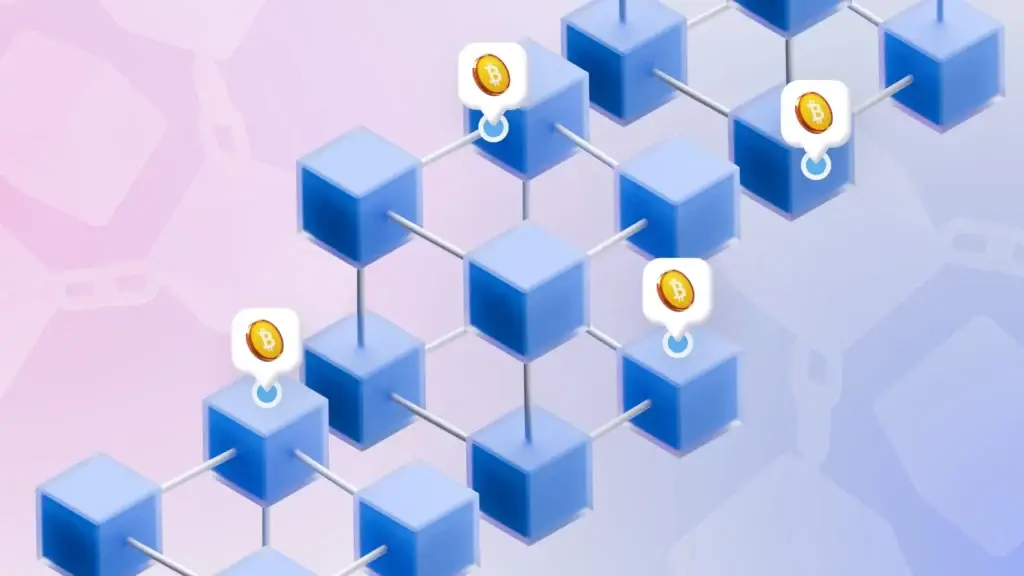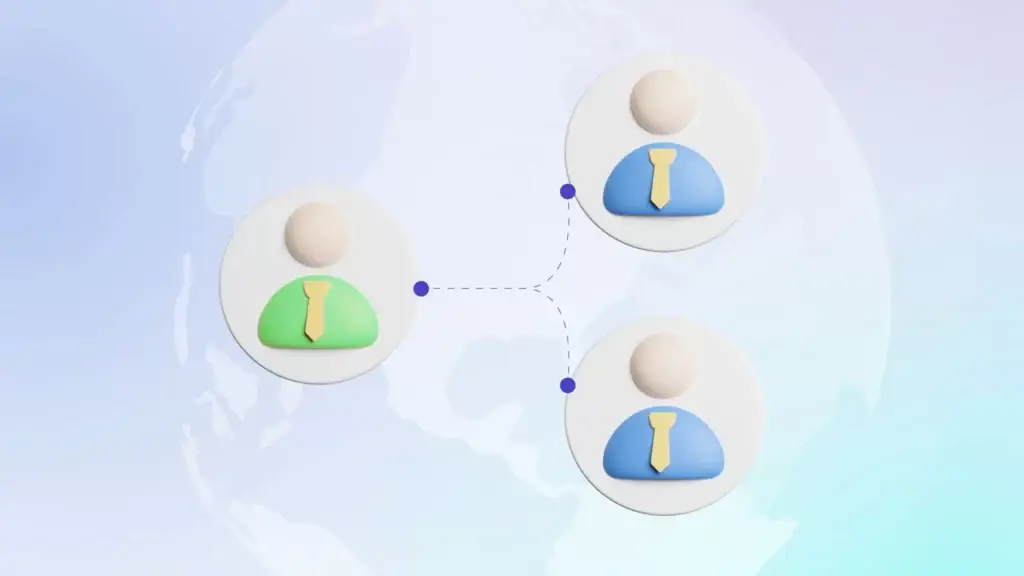Originally associated exclusively with cryptocurrencies, blockchain has evolved into a tool that can transform the way businesses, governments, and social systems work. Classifying systems is important to understanding their functionality and selecting the right scheme for specific tasks. Classifying blockchain technology into types helps identify the best models for different applications: finance, healthcare, logistics, and energy.
Type 1: Public blockchain: transparency and decentralisation in action
A public blockchain is an open, decentralised network where any participant can be part of the ecosystem, verify transactions and use internal resources. This approach offers high transparency, reliability and independence from centralised authorities.
Public networks are based on the principles of openness and equality. Anyone can connect, without having to go through complicated registration procedures or provide personal information.
Characteristics of public networks:
- Decentralisation. Management is performed by multiple nodes in the network, to the exclusion of a single control.
- Cryptographic protection. Each transaction is encrypted and recorded in an immutable log.
- Transparency. All transactions can be viewed by any participant.
Examples
Some of the best-known representatives are Bitcoin and Ethereum. These networks set the standard for the entire industry:
- Bitcoin, launched in 2009, was the first example of the use of a public blockchain. It provides secure storage and transfer of digital assets and protects data using the Proof-of-Work (POW) algorithm. It has a maximum processing speed of up to 7 transactions per second.
- Ethereum focuses on creating decentralised applications and supporting smart contracts. The network is widely used in DeFi (decentralised finance) and NFT (non-fungible tokens) projects.
Challenges and limitations
Despite its advantages, the public type of blockchain has some limitations:
- Scalability. Limited network bandwidth, especially at times of high demand.
- Energy consumption. Using the POW algorithm consumes a lot of resources. The bitcoin network consumes about 130 terawatt hours of energy per year, equivalent to the energy consumption of a small country.
- High cost. During periods of blockchain congestion, users face higher transaction costs. In 2021, Ethereum’s cost was $40 per transaction.
The format is actively used in cryptocurrencies, decentralised autonomous organisations (DAOS) and digital finance, demonstrating resilience and efficiency.
Type 2: private blockchain – a tool for internal transactions
 A private blockchain, unlike a public blockchain, is a closed network with limited access, where participants are subject to strict verification. These systems are managed by one or more organisations, ensuring control and security of transactions.
A private blockchain, unlike a public blockchain, is a closed network with limited access, where participants are subject to strict verification. These systems are managed by one or more organisations, ensuring control and security of transactions.
Private blockchains are designed to solve business problems and are characterised by high speed, low cost and flexibility. Access to the technology is limited and management is concentrated in the hands of specific users or organisations.
Features:
- Access control. Only authorised subscribers can perform transactions or view data.
- High performance. Average transaction speed of up to 1,000 transactions per second.
- Configuration flexibility. Ability to adapt network rules to business needs.
- Power saving. Private networks use algorithms that consume fewer resources, such as Proof-of-Authority (POA) or Practical Byzantine Fault Tolerance (PBFT).
Application examples
The best-known platforms are:
- Hyperledger. Hyperledger was developed by the Linux Foundation and is used in logistics, finance and healthcare. Its purpose is to track deliveries in real time. Hyperledger Fabric processes up to 20,000 transactions per second.
- Corda. Platform aimed at the financial sector. Corda helps automate interbank settlements, reducing costs and speeding up transactions.
Comparison
Private types of blockchain compare favourably with public ones in a business environment, but also have limitations.
Advantages:
- High data processing speed;
- closed structure reduces risk of hacker attacks;
- lower security costs.
Disadvantages:
- Centralised management;
- limited decentralisation reduces user trust;
- vulnerability to insider threats.
Type 3: Hybrid blockchain – balance between privacy and openness
Hybrid blockchains are a unique combination of public and private technologies. This structure allows organisations to customise data access, offer open services to customers and protect internal processes. Systems can choose which information is public and which remains private.
Features:
- Customisable access. Ability to customise the degree of openness of data.
- Interoperability with public networks. Benefits of both technologies can be exploited.
- Flexibility of application. The system is simultaneously suitable for private and public purposes.
Application examples:
- Dragonchain. The system developed by Disney supports intellectual property protection and contract management. Dragonchain enables the integration of open and closed platforms and ensures high performance and security.
- XinFin. A hybrid blockchain to optimise international trade. XinFin is used in logistics and finance and provides transparency and cost reduction.
Type 4: consortium blockchain – joint data management
A consortium blockchain is a network managed by a group of organisations, making it a partially decentralised technology. These networks establish trust between participants by sharing control and responsibility.
This type of blockchain focuses on sharing data between a limited number of users. Management of the network and validation of transactions are shared between different companies to reduce the risk of misuse.
Characteristics:
- Partial decentralisation. The network is managed by a group of participants, ensuring equal rights and greater trust.
- Transparency. All activities on the platform can only be inspected by specific nodes.
- High performance. The speed of transactions is higher than public blockchains: it reaches several thousand transactions per second.
- Flexibility. Adjustment of network parameters to adapt it to the specific objectives of the consortium.
Examples of use cases:
- Quorum, developed on Ethereum, is used in supply chain management and financial transactions. This platform supports data privacy and is therefore sought after in the banking sector.
- B3i (Blockchain Insurance Industry Initiative) is a project in the insurance sector. A consortium of large insurers is using the platform to simplify settlements between market participants and increase process transparency.
Conclusion
 The classification of the technologies helps determine which approach best suits the needs of a particular task. Each of the four systems has unique features and application scenarios. Choosing the type of blockchain depends on the objective. For example, a public network is suitable for digital finance, while a consortium network is suitable for supply chain management. By understanding the differences, users can optimise the use of the technology to solve business problems.
The classification of the technologies helps determine which approach best suits the needs of a particular task. Each of the four systems has unique features and application scenarios. Choosing the type of blockchain depends on the objective. For example, a public network is suitable for digital finance, while a consortium network is suitable for supply chain management. By understanding the differences, users can optimise the use of the technology to solve business problems.


 The structure consists of many elements that work together to form a system that is protected from outside influences. Each block contains three main components: data, a hash of the current block, and a hash of the previous block. These hashes are unique cryptographic keys that link the blocks together and ensure the security of the chain.
The structure consists of many elements that work together to form a system that is protected from outside influences. Each block contains three main components: data, a hash of the current block, and a hash of the previous block. These hashes are unique cryptographic keys that link the blocks together and ensure the security of the chain. The core of blockchain is decentralization and transparency. This makes it a revolutionary technology for many sectors. The future of this technology lies in innovation, which will only accelerate its adoption.
The core of blockchain is decentralization and transparency. This makes it a revolutionary technology for many sectors. The future of this technology lies in innovation, which will only accelerate its adoption.
 Cryptocurrency and blockchain are two inextricably linked concepts, as the first successful implementation of blockchain is Bitcoin. It is a digital currency that exists only because of the blockchain. Its uniqueness is that every participant in the network can make sure that transactions are transparent and honest.
Cryptocurrency and blockchain are two inextricably linked concepts, as the first successful implementation of blockchain is Bitcoin. It is a digital currency that exists only because of the blockchain. Its uniqueness is that every participant in the network can make sure that transactions are transparent and honest. Blockchain is a breakthrough in the world of technology. It is changing the way we approach data security, eliminating intermediaries and ensuring transparency. In the future, it could underpin many processes, making them more open and honest. It is worth considering how this technology is already changing the world and what lies ahead.
Blockchain is a breakthrough in the world of technology. It is changing the way we approach data security, eliminating intermediaries and ensuring transparency. In the future, it could underpin many processes, making them more open and honest. It is worth considering how this technology is already changing the world and what lies ahead.